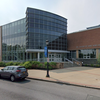The Gratitude Project supports health-care workers
GUILDERLAND — “My childhood friend had COVID. You saved her life. No words can express my gratitude.”
That was one of 650 messages gathered by a Guilderland High School junior to share with health-care workers in the midst of the coronavirus pandemic.
In mid-April, Vibha Gopalakrishnan launched The Gratitude Project, for Guilderland students, teachers and staff, and the community, to thank health-care workers. Anyone who wanted to participate could write a message, share a word, record a thank-you video, or create an illustration to be sent to local medical professionals.
About 60 percent of the responses came from students. Farnsworth Middle School students and staff sent the most messages, about 41 percent, followed by Guilderland High School at about 29 percent, and then each of the five elementary schools.
After countless hours of collection and editing, Gopalakrishnan released a video in early June. The video begins, “To our lionhearted medical community ….”
This, along with messages that couldn’t be included in the video, were shared with St. Peter’s Health Partners and Albany Medical Center. Some messages were shared with teachers and staff at Guilderland Central School District.
“All of the messages were so heart-warming, and it was beautiful to see our school district come together and share compassion, love, and gratitude,” said Gopalakrishnan in a release from the school district. “My personal favorite was the collage of illustrations. All the drawings were simply stunning!”
— Melissa Hale-Spencer



